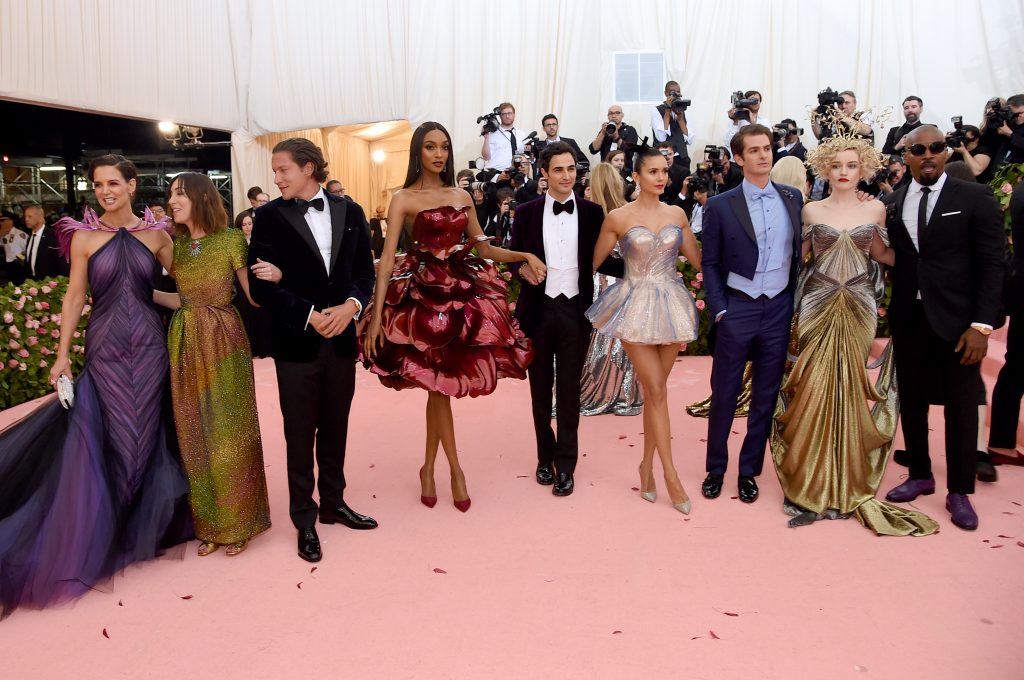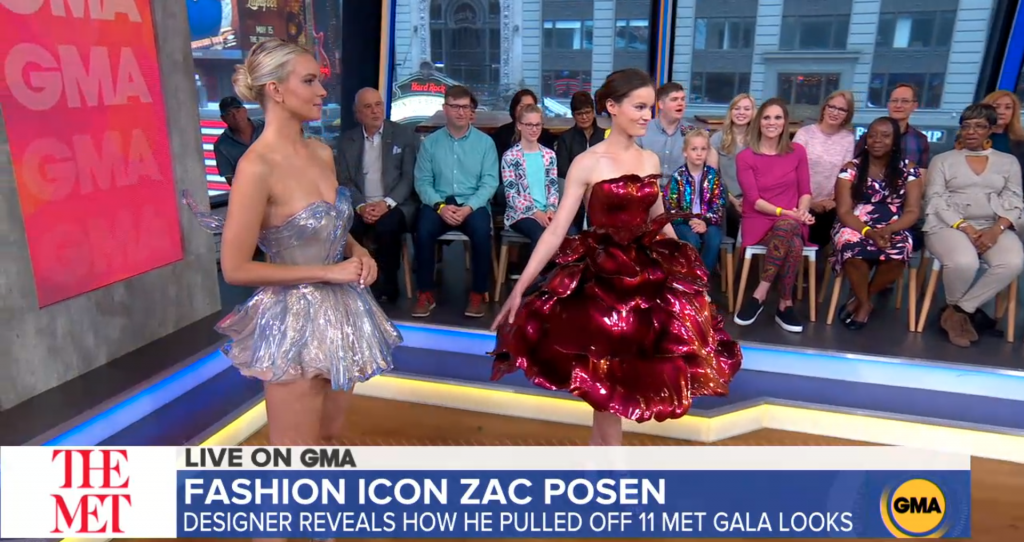In May this year, 3D printing made its red carpet debut. The vision of New York fashion designer Zac Posen, several unique fashion pieces caused a stir at the 2019 Met Gala. Worn by British supermodel Jourdan Dunn and Canadian actor Nina Dobrev, arguably the most iconic pieces in Posen’s collection were the so-called “rose gown,” and a glass-slipper-like bustier.
A feat of engineering as much as haute-couture, the production of these unique fashion statements required an expert team of additive manufacturing professionals. In this case, a partnership between Protolabs and GE Additive was formed.
From AddWorks, the consultancy branch of GE Additive, I speak with Engineering Manager Stephanie Depalma, Lead Engineer Shannon Jagodinski, and Designer Rhiannon Sheridan about the making of these iconic garments.

Plastic as fabric
Dunn’s rose gown is a glossy red dress made from 21 individually 3D printed petals. The idea is that the garment appears frozen in time, capturing movement and the organic growth of a rosebud. Underneath, holding each of the petals together is a custom-made metal frame. By contrast, the bustier worn by Dobrev gives the illusion that it is made of single piece of glass. Both of these pieces were worked on extensively by the AddWorks team in the run-up to the 2019 Met Gala. In all, the team was given six months in which to complete the project. Though GE Additive handled some of the manufacturing for the project at its Additive Technology Center in Cincinnati, the main task of the AddWorks team was interpreting sketches of the garments as CAD models.
“Our biggest involvement in this project was with the design, especially the design for additive,” explains DePalma. In particular, the team was concerned with “how to interpret his [Posen’s] vision into a CAD model.”

Performance in fashion terms
Uniting each element of the project were the unique considerations that had to be made in relation to engineering for fashion. “One of the fun parts about the whole collaboration was to understand what performance meant to Zac and his team,” DePalma told me, “That means something different to engineers.”
The aesthetic performance, how the items appeared on camera and their shiny finish, was of high importance, though, as Sheridan points out, the dresses also “needed to stay together and not break,” and “[They] needed to be lightweight enough so that the models could actually move and function as normal when walking down the runway.”
Crucially, each piece also had to fit perfectly. By working with non-traditional fashion materials, this task was much more challenging than fitting the average dress. Unlike fabric, metal and plastic can’t easily be tweaked to fit the model. Instead, the engineers would have had to reset the whole thing. “Usually our parts aren’t fitted on the human body, so we had to figure out how to model the body, and make sure the pieces that we would make would fit perfectly,” adds Sheridan. Photogrammtry was used to help with the design for the body, and in the CAD model the team made allowances for the fluctuation in the model’s body between “fitting” and the evening of the event. Members of the AddWorks team volunteered to test the fit of the dress throughout development too. Following the Met Gala, this included an appearance on Good Morning America.

Running parallel to the fit and aesthetic performance of the gowns was the further task of printability. For the rose gown, Jagodinski explains “It was making sure that we would actually be able to manufacture it. That it was actually feasible for a 3D printer, and that it would fit inside the confines of a [build area].” To do this, the team chose to break many of the parts down into smaller assemblies, making sure that they could fit together in a repeatable way.
“Figuring out how those segments would be put together in a reliable way that can be replicated by someone else was probably one of our more difficult tasks,” Jagodinski adds.
The rose gown on the road
In all, the AddWorks team worked on several components of Posen’s Met Gala collection, including smaller pieces, like the 3D printed embellishments on Deepika Padukone’s conventional gown.
The majority of the pieces were manufactured at Protolabs HQ in North Carolina. Dobrev’s bustier was made at the company’s European site in Feldkirchen, Germany, and the GE Additive Technology Center in Cincinnati made the metal frame of the rose gown using Arcam EBM technology. Logistically, it was also difficult to transport all of these items to New York for the night of the event.
When the 20+ petals for the rose gown were completed, the AddWorks team requested that they were sent to Cincinnati so that they could do a trial assembly of the dress with the titanium frame. When it came time for the Met Gala, the team then drove the petals and the frame in a van all the way from Cincinnati to New York on an 11-hour road trip.
CAD design and exploded view of the rose gown. Image via GE
The finished articles, though not entirely effortless to wear, were incredibly well received by Posen’s studio at the end of the project, and attracted a lot of press attention at the event, “We were there in person for the fittings and they seemed to absolutely love all the pieces,” says Jagodinski. “[It] was really exciting to see because there were some rough patches along the way. [For example] when they would describe things that they wanted and we didn’t fully understand what they’re asking for because it’s so outside of what our day jobs are that we had to kind of figure out how to interact with them.” Posen himself was very enthusiastic about the dresses and in fact, had to be reminded to be careful when touching the more delicate pieces.
Looking at the potential of doing more projects like this in the future, DePalma says that, as 3D printing evolves, “It’s definitely a possibility, not just for Zac [Posen] but for the fashion industry as a whole.”
“Right now,” she adds, “we’re limited just by the materials that are available, and the sizes in which we can print it. I think as the technology matures, it’s just going to be a way more appealing forum.”
Subscribe to the 3D Printing Industry newsletter for all the latest additive manufacturing news. You can also keep connected by following us on Twitter and liking us on Facebook. Looking for a career in the industry? Visit 3D Printing Jobs for new opportunities in your area.
Featured image shows detail of the glass-slipper-like dress worn by Nina Dobrev at the 2019 Met Gala. Photo via Zac Posen x GE Additive x Protolabs



